
Academism is an authoritative, virtuoso, and conservative style
Academism is the most "long-lived" movement in European visual arts. It originated as early as the 16th century, gained strength in the 17th to 19th centuries, and echoes are still found in the works of contemporary artists. Academism:
- cultivated classical traditions.
- served as a means of transmitting the great heritage of antiquity and the Renaissance.
- maintained a high standard of technical mastery among artists.
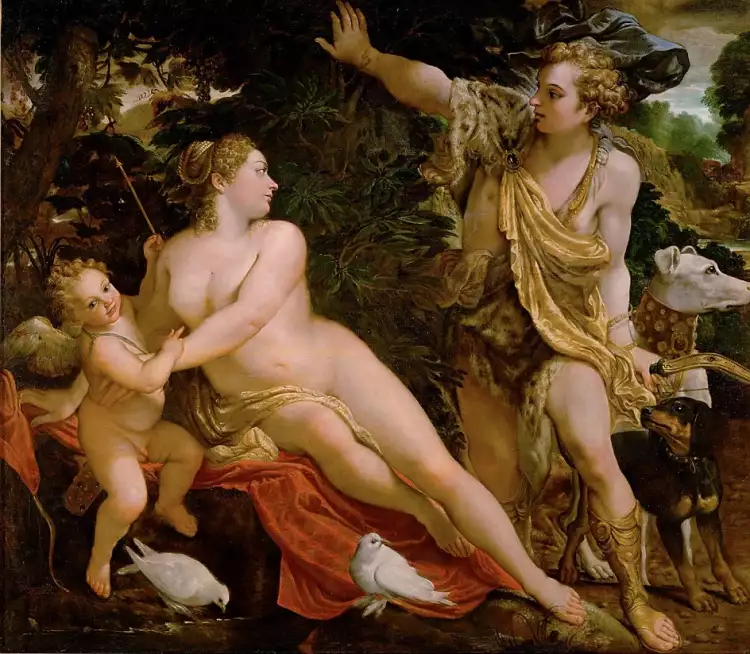 Academism. Annibale Carracci. Venus, Adonis and Cupid, circa 1595
Academism. Annibale Carracci. Venus, Adonis and Cupid, circa 1595
In terms of form, academism as a style represented a canonized version of Renaissance art initially, and later, classicism. However, within this artistic vector, there are numerous branches. For instance, France is characterized by the classicist-academic doctrine, giving rise to salon painting and lavish Empire style. In Italy, the baroque-academic tradition prevailed.
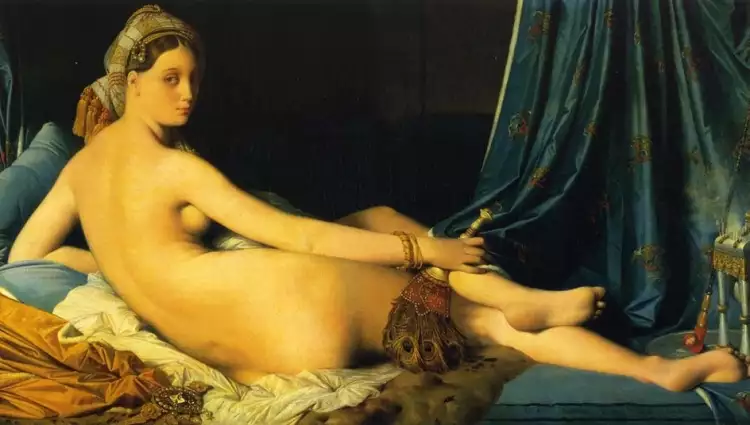 Academism. Jean-Auguste-Dominique Ingres. Grande Odalisque, 1814
Academism. Jean-Auguste-Dominique Ingres. Grande Odalisque, 1814
There were also artists who combined academicism with elegant Rococo.
Academic painting, despite its conservative nature, continued to evolve, absorb artistic achievements of the most talented masters (usually after their innovative phase ended and they gained general recognition).
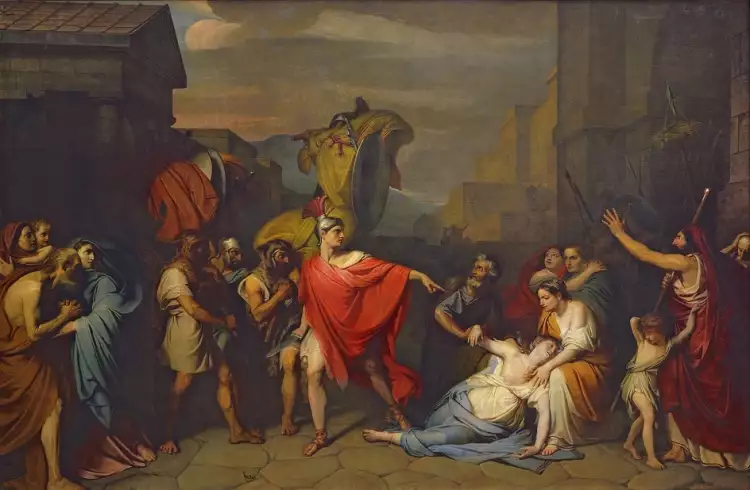 Academism. Fyodor Bruni. Death of Camilla, sister of Horace, 1824
Academism. Fyodor Bruni. Death of Camilla, sister of Horace, 1824
If we look at the works of academic artists from the late 16th and late 19th centuries, the difference will be evident: the former display more Renaissance traits and elements of Mannerism, while the latter notably show influences of Neoclassicism, Empire style, Romanticism, and even Realism.
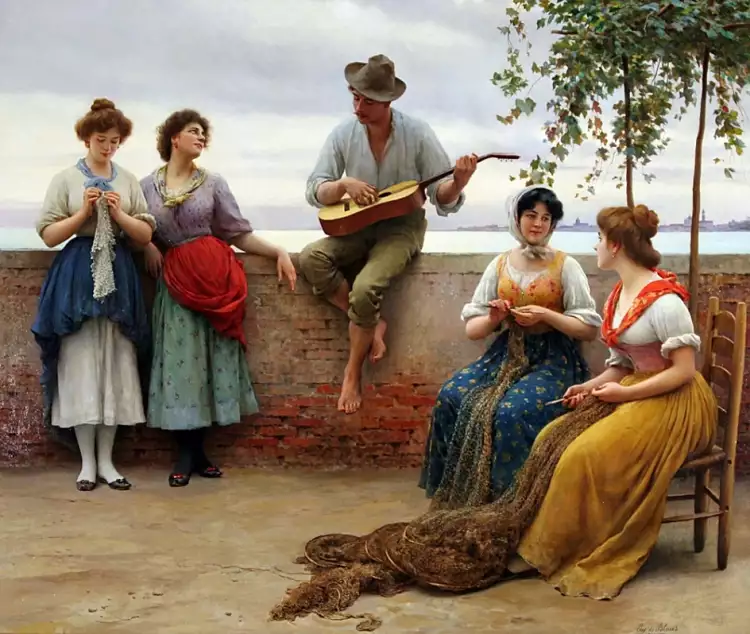 Academism. Eugène de Blaas. Serenade, 1910
Academism. Eugène de Blaas. Serenade, 1910
The academic direction was not completely closed and unchanging. Techniques improved, new subjects emerged. However, these changes were never revolutionary: the foundations of academic tradition remained unchanged.
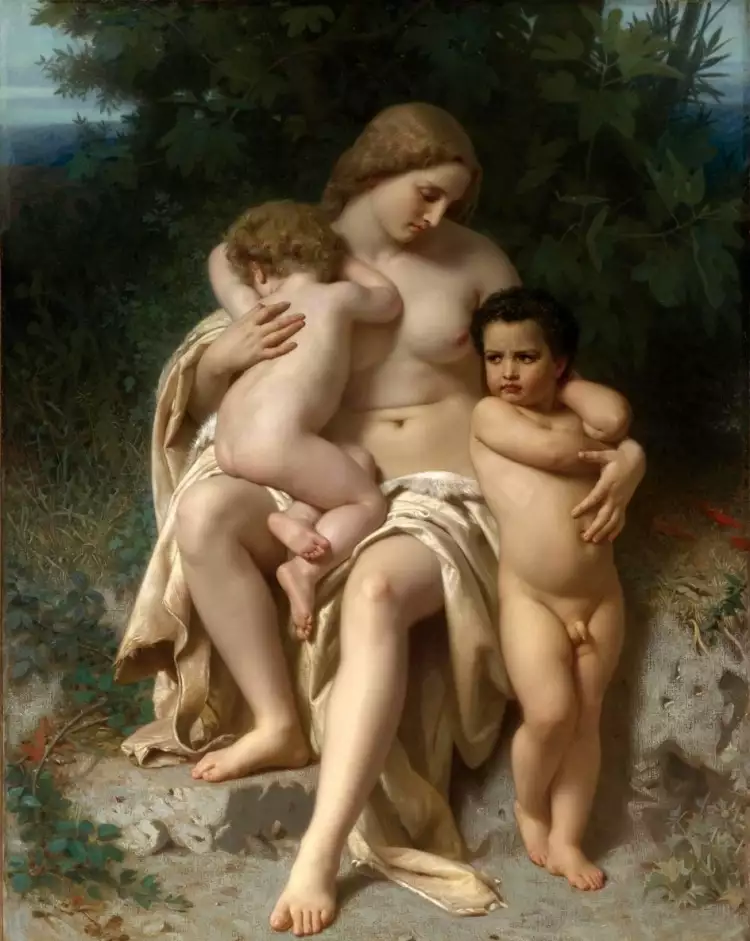 Academism. William Adolphe Bouguereau. Cain and Abel, 1861
Academism. William Adolphe Bouguereau. Cain and Abel, 1861
The role of artistic associations in the development of academism
The emergence of this movement is directly linked to the establishment of Art Academies in Italy - creative associations that also had educational functions. They were founded by well-known painters and theorists, with secular and spiritual authorities acting as patrons. Sometimes such institutions were established with direct involvement of high figures, including up to the Popes in Rome.
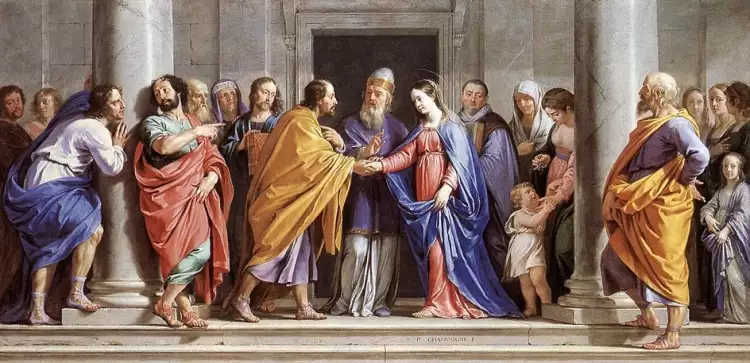 Academism. Philippe de Champagne. Marriage of the Virgin Mary, 1644
Academism. Philippe de Champagne. Marriage of the Virgin Mary, 1644
By the end of the 16th century, there were already around five hundred such institutions on the Apennine Peninsula, and all of them were established in the second half of the century. The Renaissance era had nearly concluded, so academism was in no way a Renaissance phenomenon. It emerged on the ruins of the Renaissance, when Europe became disillusioned with Renaissance ideals and underwent a profound existential crisis, thus assuming a secondary character.
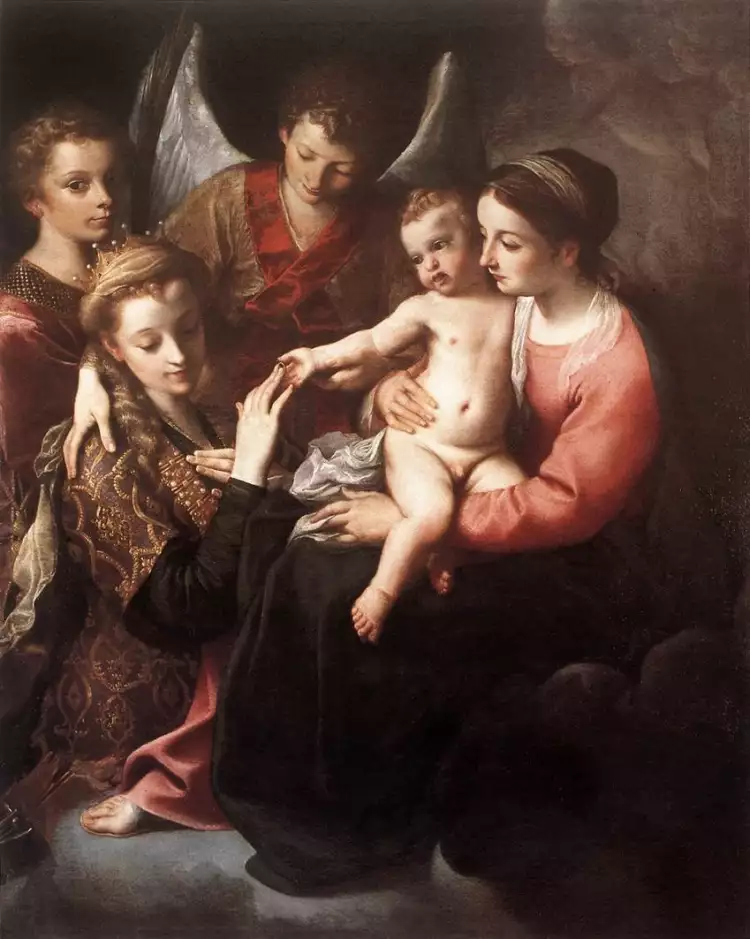 Academism. Annibale Carracci. The Mystic Marriage of St Catherine, 1585
Academism. Annibale Carracci. The Mystic Marriage of St Catherine, 1585
In the 17th and 18th centuries, similar establishments began to appear in other countries as well, often with state support, which provided them resources and increased their authority. The most influential were the royal and imperial academies.
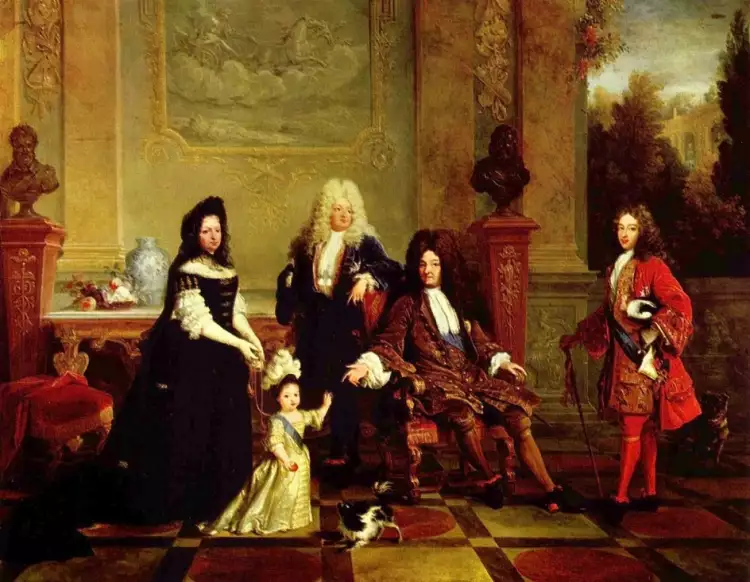 Academism. Nicola de Largillière. Portrait of Louis XIV and his heirs, 1710
Academism. Nicola de Largillière. Portrait of Louis XIV and his heirs, 1710
These institutions supported artists, facilitated the execution of court and church commissions, organized exhibitions (including the prestigious Paris Salon — the official exhibition of the Paris Academy of Fine Arts), and fulfilled educational functions. Their role in the development of culture was enormous.
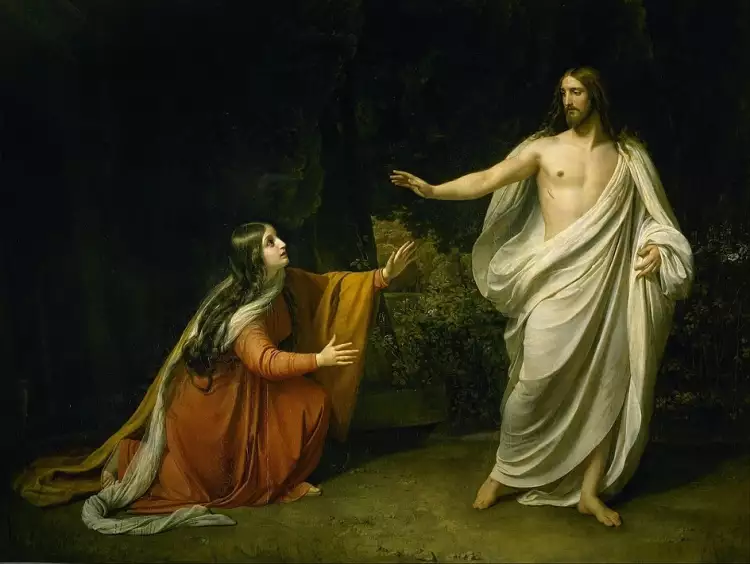 Academism. Alexander Ivanov. Christ's Appearance to Mary Magdalene after the Resurrection, 1835
Academism. Alexander Ivanov. Christ's Appearance to Mary Magdalene after the Resurrection, 1835
For example, the founder of the Russian Imperial Academy of Arts, Ivan Ivanovich Shuvalov, justified his initiative this way: foreign painters come to Russia to earn money, get rich, and leave without passing on their knowledge to anyone. Therefore, for the development of national painting, the creation of a domestic center for artistic education is urgently needed.
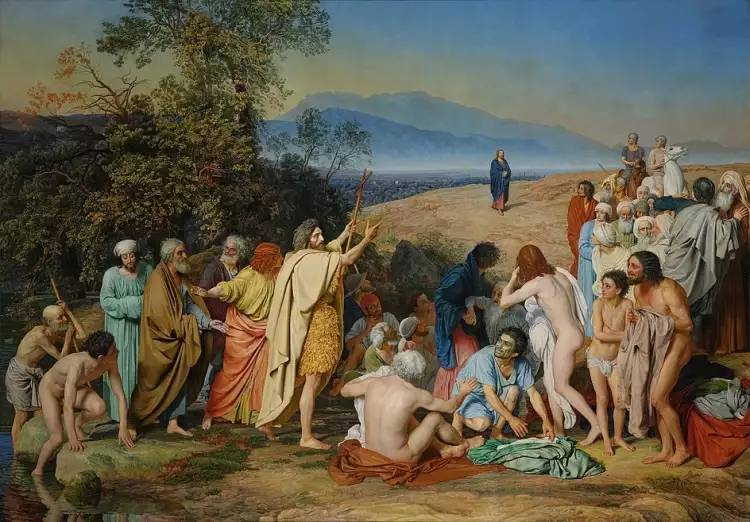 Academism. Alexander Ivanov. The Appearance of Christ Before the People, 1837-1857
Academism. Alexander Ivanov. The Appearance of Christ Before the People, 1837-1857
But how did this good initiative turn into a target for critics?
 Academism. Luigi Mussini. Triumph of Truth, 1847
Academism. Luigi Mussini. Triumph of Truth, 1847
Academic Wars
As academic painters oriented themselves towards classical models, backed by the authority of official institutions (operating with the approval and patronage of authorities), their creations were in demand. Potential buyers or patrons were clear that the work was of high quality, adhering to the canons of painting mastery.
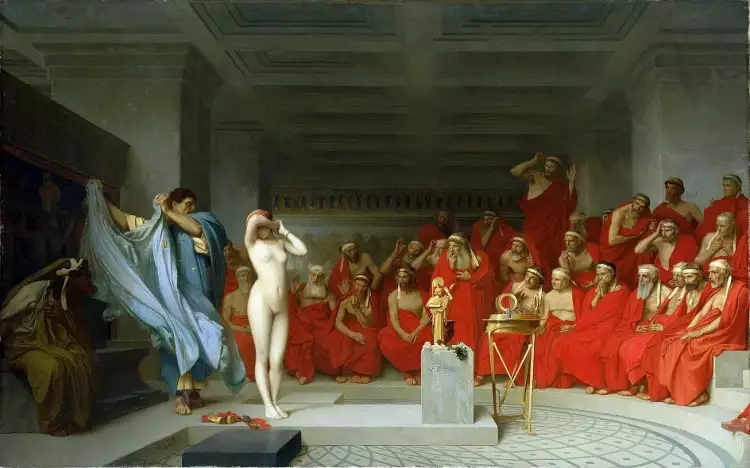 Academism. Jean-Léon Jerome. Phryne before the Areopagus, 1861
Academism. Jean-Léon Jerome. Phryne before the Areopagus, 1861
Being part of the academicians provided painters with ample opportunities for building a career, ensuring not only a piece of bread but, metaphorically speaking, a rather decent caviar sandwich.
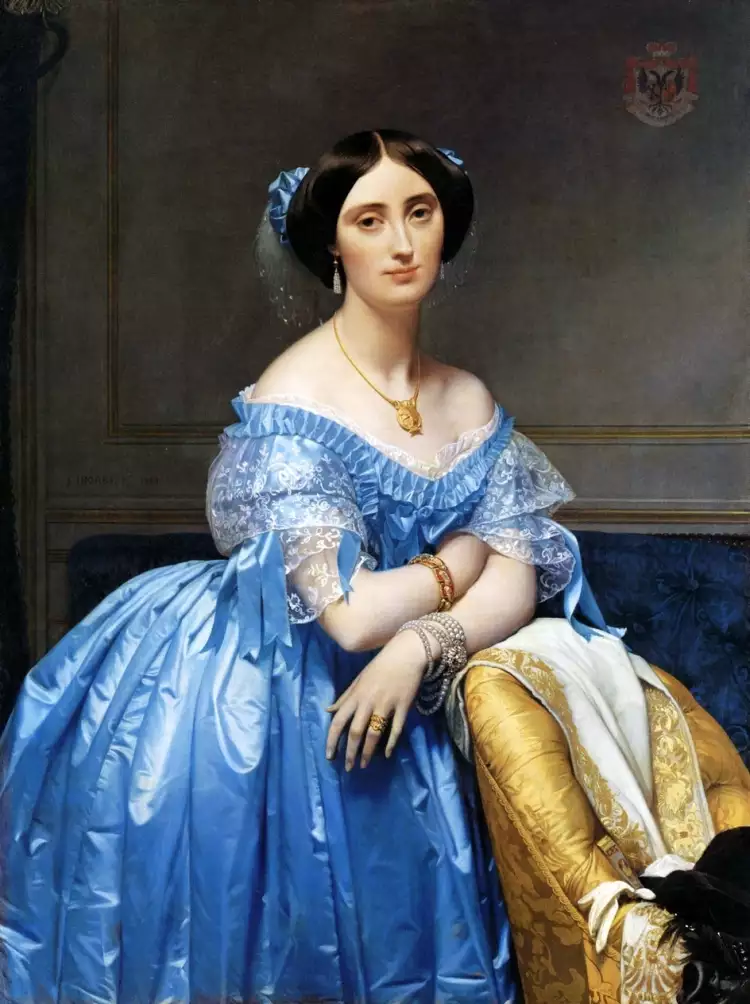 Academism. Jean Auguste Dominique Engr. The Princesse de Broglie, 1851-1853
Academism. Jean Auguste Dominique Engr. The Princesse de Broglie, 1851-1853
At the same time, hardly any other movement faced such harsh, and more importantly, prolonged (one might say eternal) criticism. Academicism became synonymous with conservatism and the dogma of form over content. Many styles were born out of protest against conservative-academic dogmas. Numerous great paintings were created in defiance of academism, in the struggle against it.
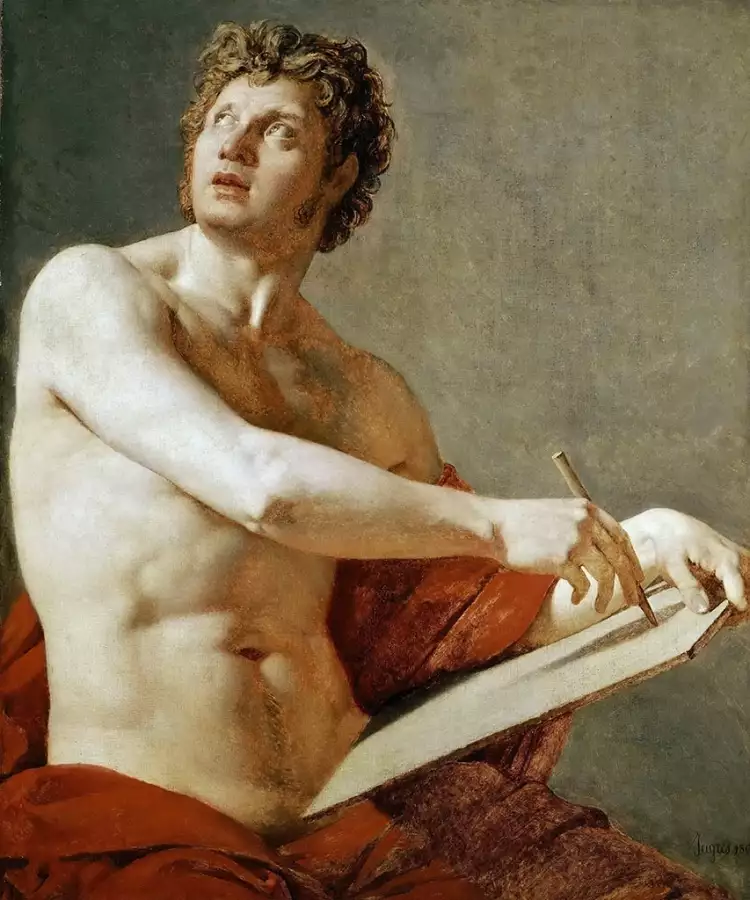 Academism. Jean Auguste Dominique Engr. Academic Study of a Male Torso, 1801
Academism. Jean Auguste Dominique Engr. Academic Study of a Male Torso, 1801
On their part, conservative academic artists sometimes harshly fought against innovative artists or, at the very least, refused to acknowledge them. For instance, Federico Zuccari rejected Caravaggio's admission to the Academy of Saint Luke, despite Caravaggio already being well-known and highly recommended. The reason was Caravaggio's innovative approach. Zuccari believed Caravaggio's success was due to the "shade of novelty," which attracted wealthy patrons, and the contrasting expressive technique was the result of... an unruly character!
However, Caravaggism eventually did influence Italian academic artists. This is quite characteristic of the academic approach: taking all the best from the greats... but only when they've already gained recognition.
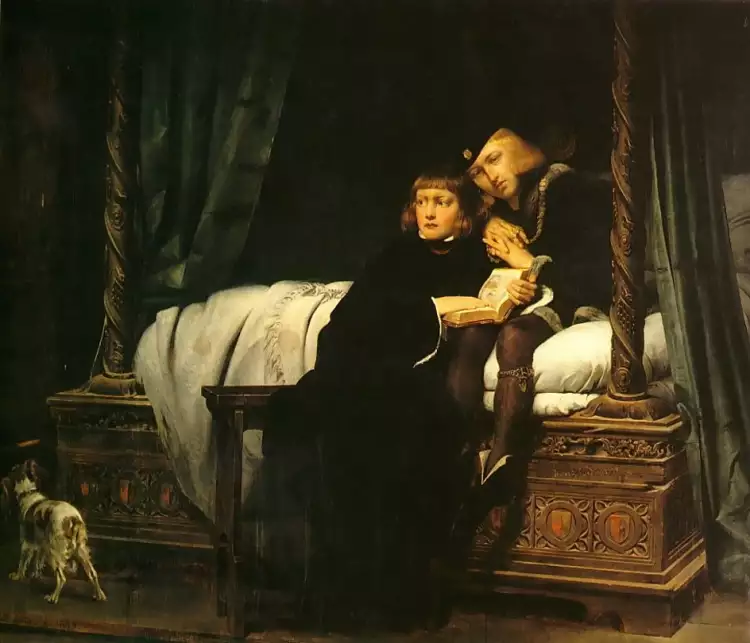 Academism. Paul Delaroche. King Edward V and the Duke of York in the Tower, 1830
Academism. Paul Delaroche. King Edward V and the Duke of York in the Tower, 1830
There were many similar examples of "internal wars" in the creative environment. To counter the conservative-academic community, associations, unions, studios, and private "mini-academies" were formed. In Russia, for example, the Society of Traveling Exhibitions emerged.
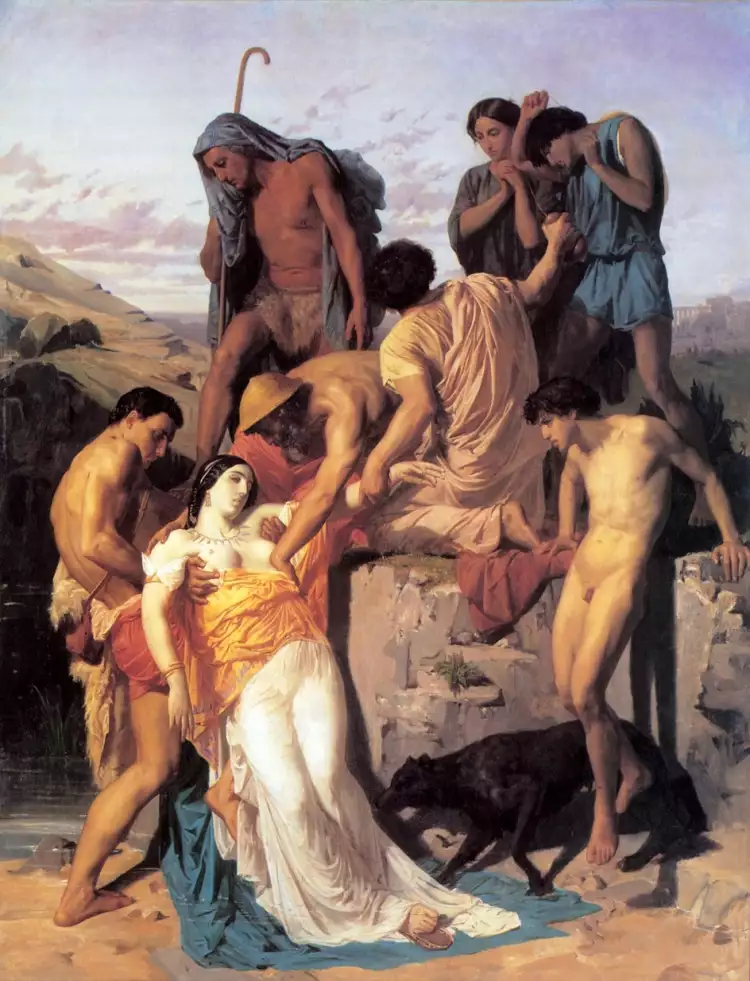 Academism. Shepherds Find Zenobia on the Banks of the Araxes, 1830
Academism. Shepherds Find Zenobia on the Banks of the Araxes, 1830
In 1863, the jury of the Paris Salon rejected 3,000 paintings out of 5,000. Among the rejected was Édouard Manet. A major scandal erupted, and the offended struck back by organizing the "Salon des Refusés."
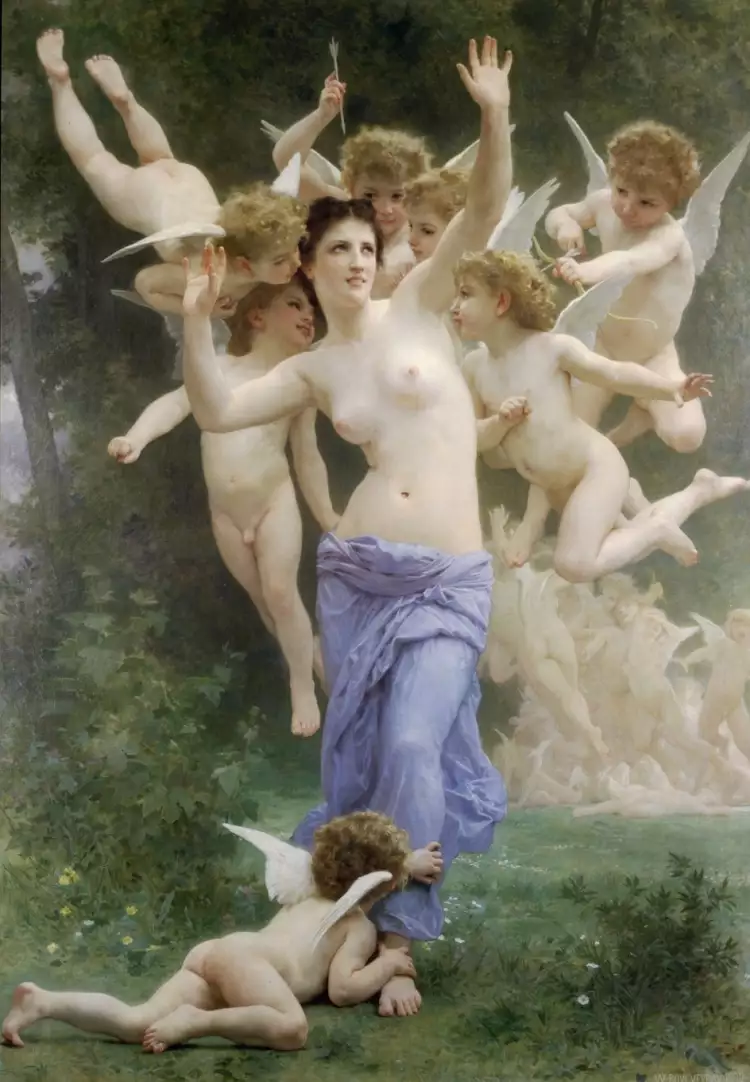 Academism. William-Adolphe Bouguereau. Nest of Cupids, 1892
Academism. William-Adolphe Bouguereau. Nest of Cupids, 1892
Main Features of Academicism, Its Fame and Critique
Interestingly, distinguishing the work of academicians from artists working in other styles, especially within classicism and its second wave, neoclassicism, can be quite challenging. For example, at first glance, it's not so easy to tell the difference between the historical paintings of Jacques-Louis David and Jean Auguste Dominique Ingres. But the former is a neoclassicist, while the latter is an academic.
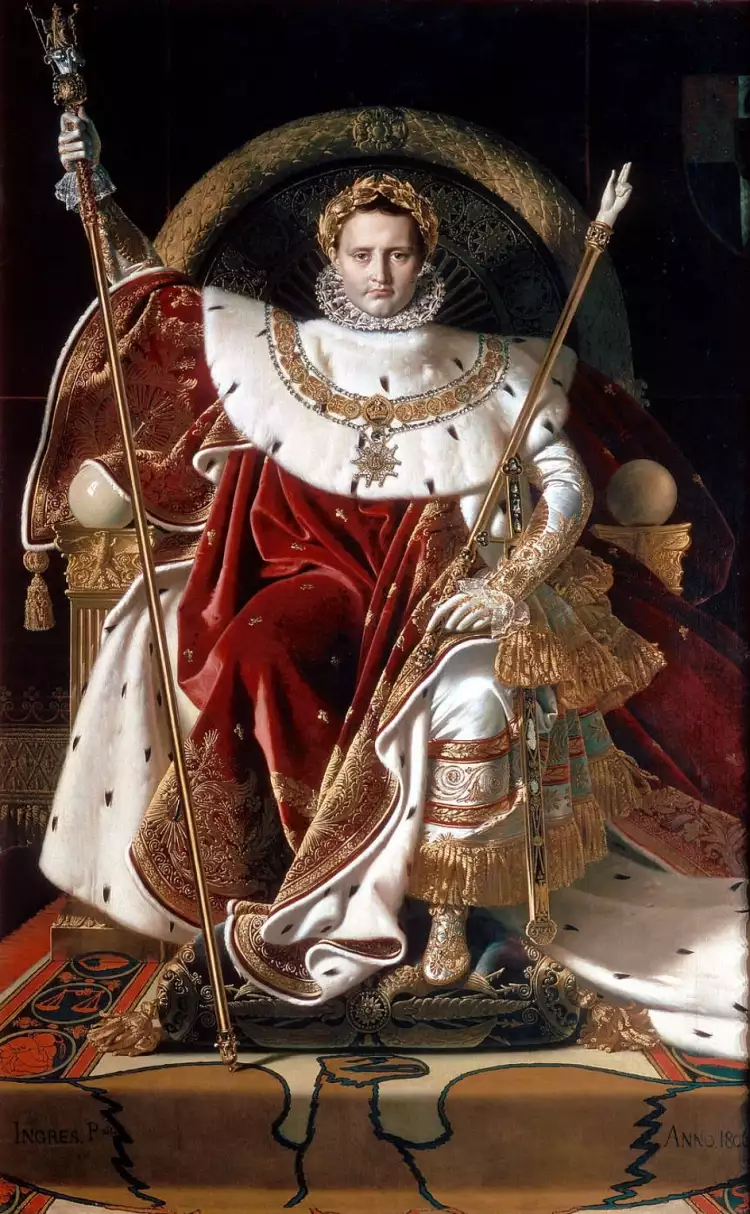 Academism. Jean Auguste Dominique Engr. Napoleon I on His Imperial Throne, 1806
Academism. Jean Auguste Dominique Engr. Napoleon I on His Imperial Throne, 1806
Where does the watershed lie?
- Academic artists preserved the canons and hardly allowed them to evolve.
- They shunned experiments and innovation. (Moreover, they regulated stylistic, color, and compositional aspects, even down to the rotation of figures. Approved methods of brushstroke application were indicated, a hierarchy of genres was established, preferred themes and morals were specified, along with an acceptable level of eroticism.)
- The images created by academic authors were idealized, with dramatization being theatrical, lacking in sincerity in emotional expression.
- Since authorities took the Academies under their wing, these institutions supported the ruling regime and sometimes turned into breeding grounds for reaction (expressed both in the servile nature of the artworks and in their treatment of "unreliable" colleagues).
- Academicians were conservative in their choice of themes and subjects, avoiding "questionable" themes that could shock and offend high society.
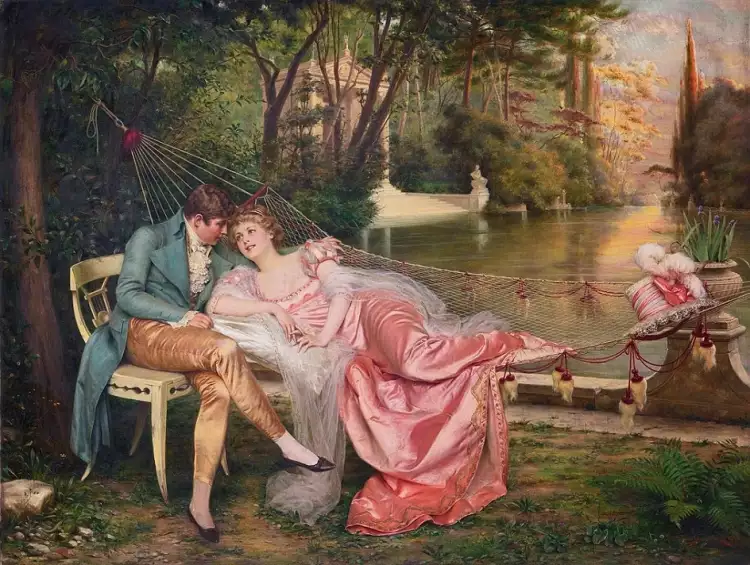 Academism. Charles-Joseph-Frédéric Soulacroix. Flirtation
Academism. Charles-Joseph-Frédéric Soulacroix. Flirtation
For instance, the famous painting "The Raft of the Medusa" by Théodore Géricault was exhibited at the Paris Salon with the "neutral" title "Scene of Shipwreck" to reduce the political tension of the theme (the painting was based on a real and resonant catastrophe). "The Raft" was criticized for its "undignified" subject, dark palette, and "monotonous" lighting, as well as its non-standard composition... and even for not being suitable for a monarch's palace or a connoisseur's high-society cabinet!
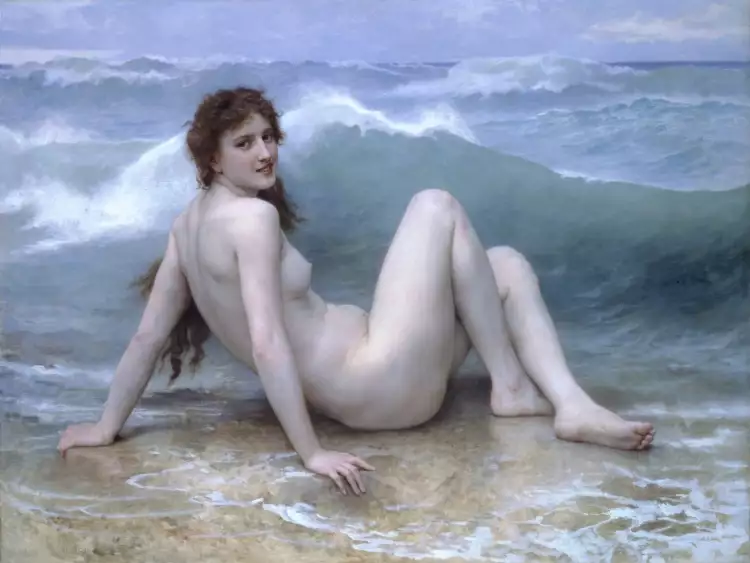 Academism. William-Adolphe Bouguereau. Wave, 1896
Academism. William-Adolphe Bouguereau. Wave, 1896
In their effort to please society, academic authors chose popular subjects.
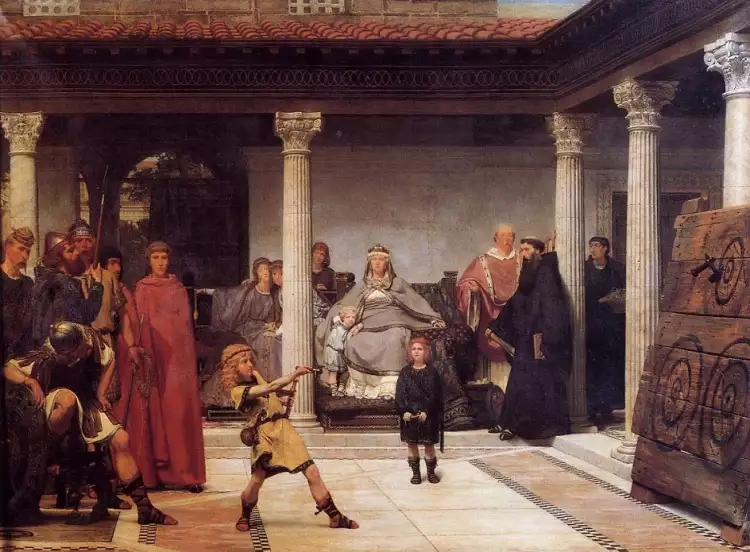 Academism. Lawrence Alma-Tadema. The Education of Chlodwig's Children, 1861
Academism. Lawrence Alma-Tadema. The Education of Chlodwig's Children, 1861
It was precisely within this framework that countless grand portraits and historical canvases were created, glorifying authority.
Painters were not averse to following fashionable trends (of course, those ideologically and politically safe). For example, in the 19th century, there was a trend of depicting nude figures in the setting of Eastern seraglios and slave markets, and academic artists essentially occupied this niche.
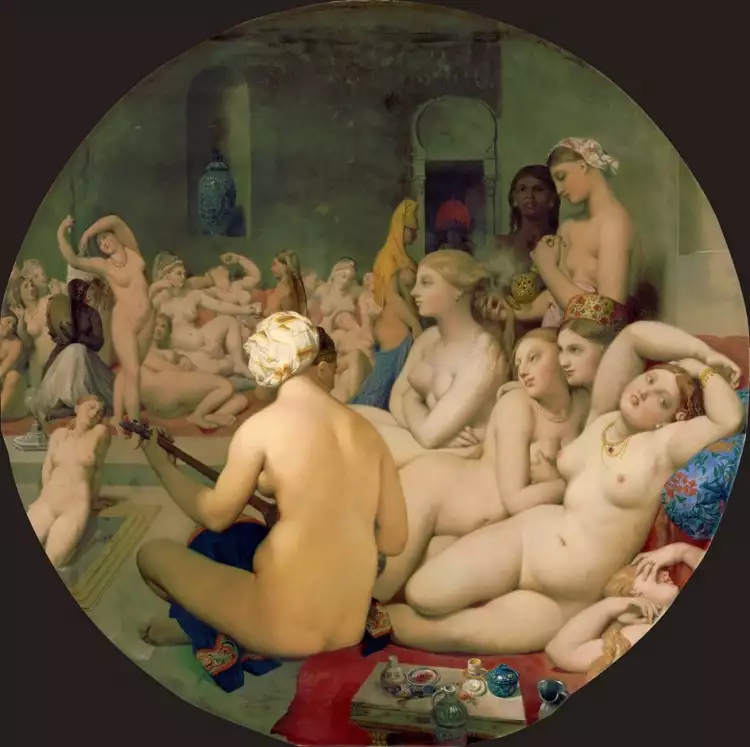 Academism. Jean Auguste Dominique Engr. The Turkish Bath, 1863
Academism. Jean Auguste Dominique Engr. The Turkish Bath, 1863
This approach, which could even be called commercial, rightfully drew criticism from non-conformist artists.
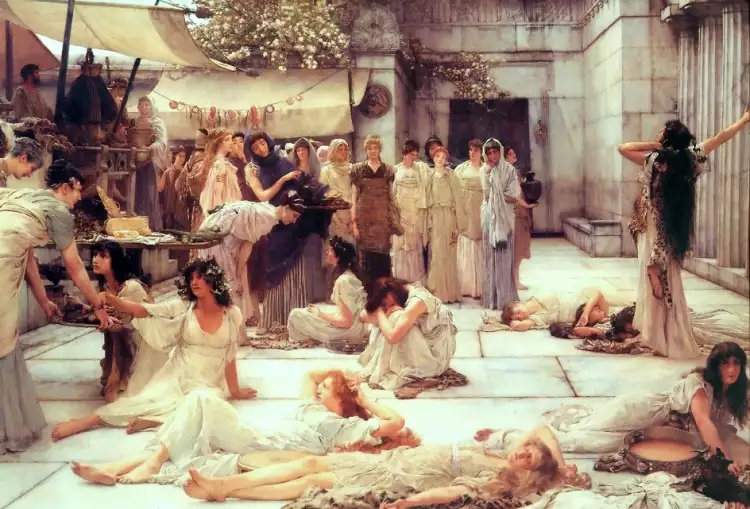 Academism. Laurence Alma-Tadema. Women of Amphissa, 1887
Academism. Laurence Alma-Tadema. Women of Amphissa, 1887
Certain academic branches were particularly heavily criticized. For example, the term "salon art" became almost derogatory, as Salon participants, tailoring their work to public taste, demonstrated the highest degree of conformity and "stamped out" canvases on popular themes in a classical manner (though it must be admitted that the execution was often virtuosic).
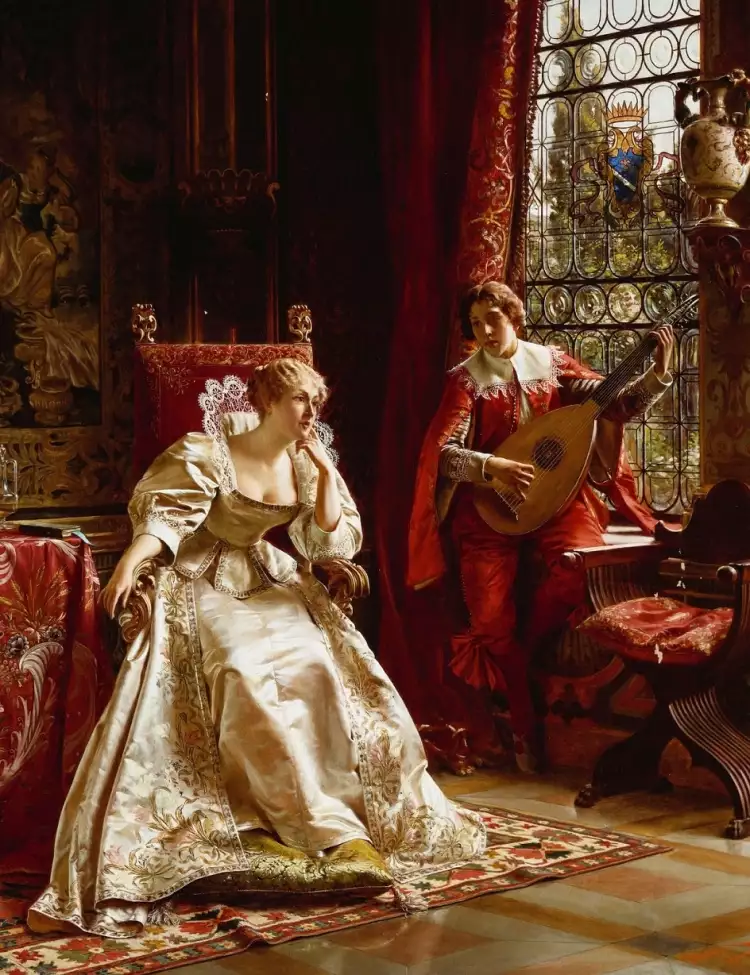 Academism. Charles Joseph Frédéric Soulacroix. Serenade
Academism. Charles Joseph Frédéric Soulacroix. Serenade
The term "pompier art" (Les Pompiers) emerged as a mockery: in the second half of the 19th century in France, pompous and bombastic canvases featuring characters in ancient helmets, resembling... firefighting helmets, were popular. Furthermore, the term sounded like a pun: the words "Pompeii," "pompous," and "firefighter" in French are similar — Pompéi, pompeux et pompier.
Academism. Jean-Léon Jerome. «Pollice verso», 1872
A challenge for academic painters was the rigid canonization of form, often overpowering content. While for Renaissance, classicist, and neoclassicist masters, ancient models served as a foundation for creating a unique style filled with original ideological content, their academic colleagues copied and preserved the canons.
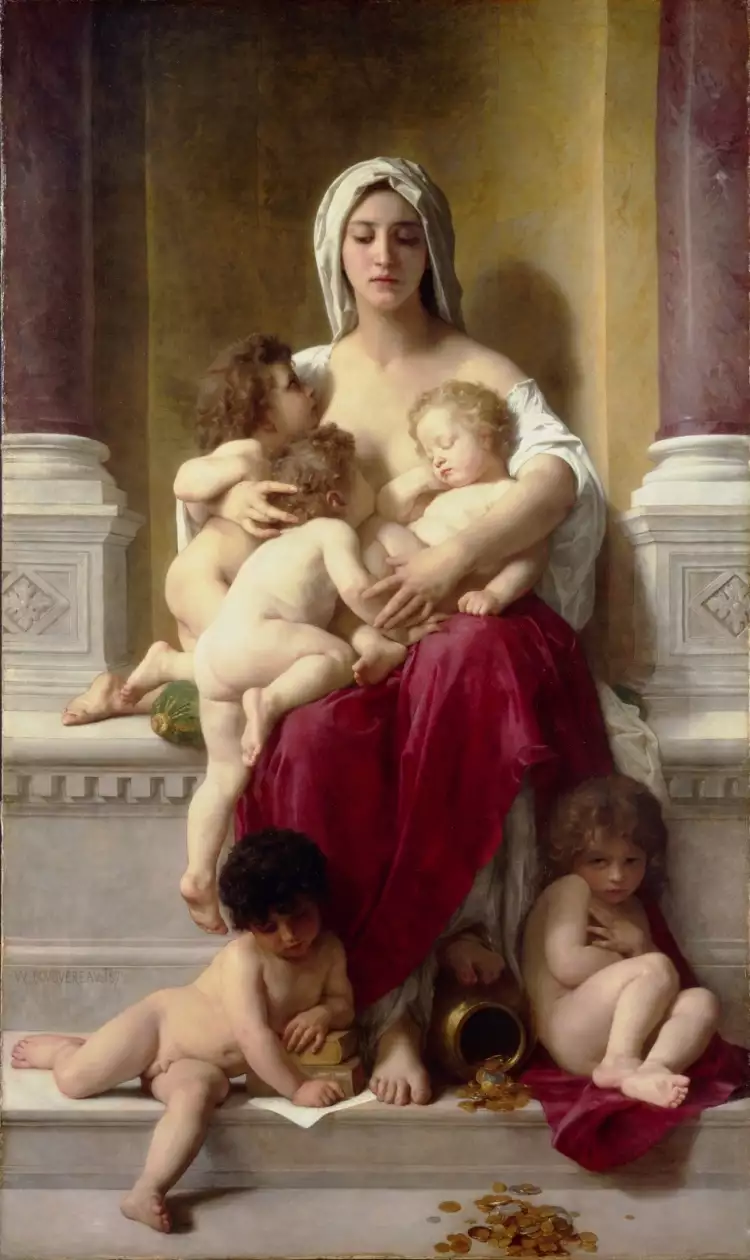 Academism. William-Adolphe Bouguereau. Love (Charity), 1878
Academism. William-Adolphe Bouguereau. Love (Charity), 1878
Therefore, for instance, the works of Pre-Raphaelites, German neo-idealists, and even some modernists who incorporated elements of neoclassicism into their art differ dramatically from traditional academic paintings of the same period.
Academism. Lawrence Alma-Tadema. Triumph of Titus, 1885
For neoclassicists, antiquity was filtered through the creative "self," while for academicians, the "self" came second after the canon.
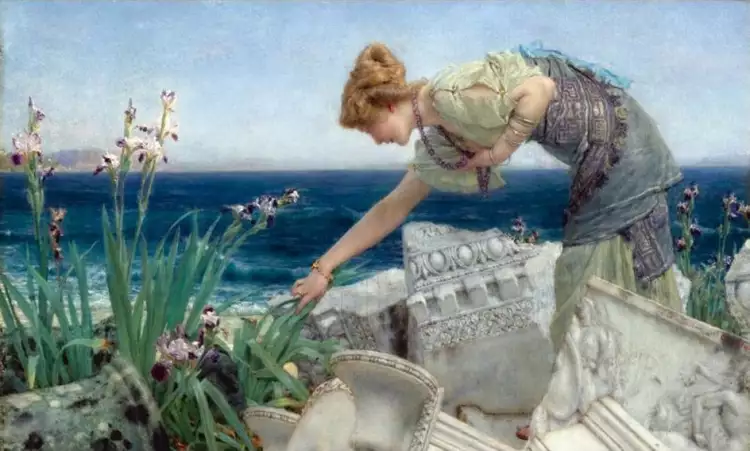 Academism. Lawrence Alma-Tadema. Among the ruins, 1904
Academism. Lawrence Alma-Tadema. Among the ruins, 1904
Famous Academic Artists
However, it would be wrong to perceive academicism as a negative phenomenon. Many outstanding masters grew from its foundation, adopting excellent techniques and then expanding the boundaries of their creativity.
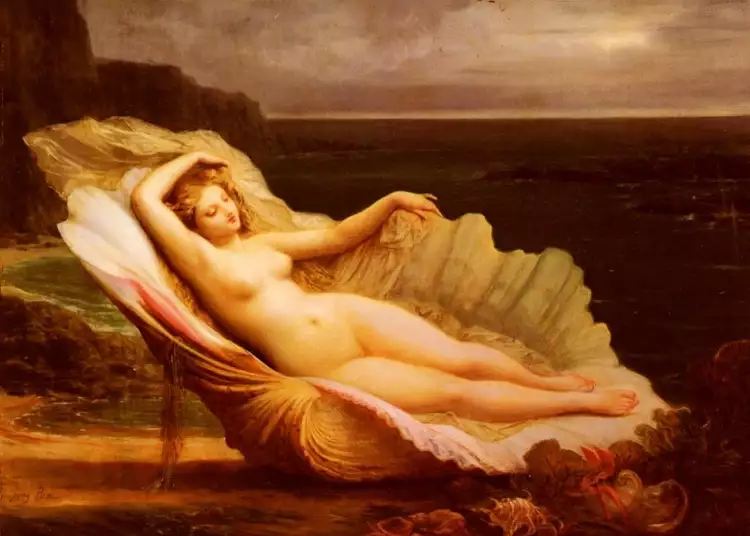 Academism. Henri-Pierre Picou. Venus
Academism. Henri-Pierre Picou. Venus
For example, the technique of Karl Pavlovich Bryullov is traditionally academic, but his subjects went beyond the canon, and classicism harmoniously combined with romanticism.
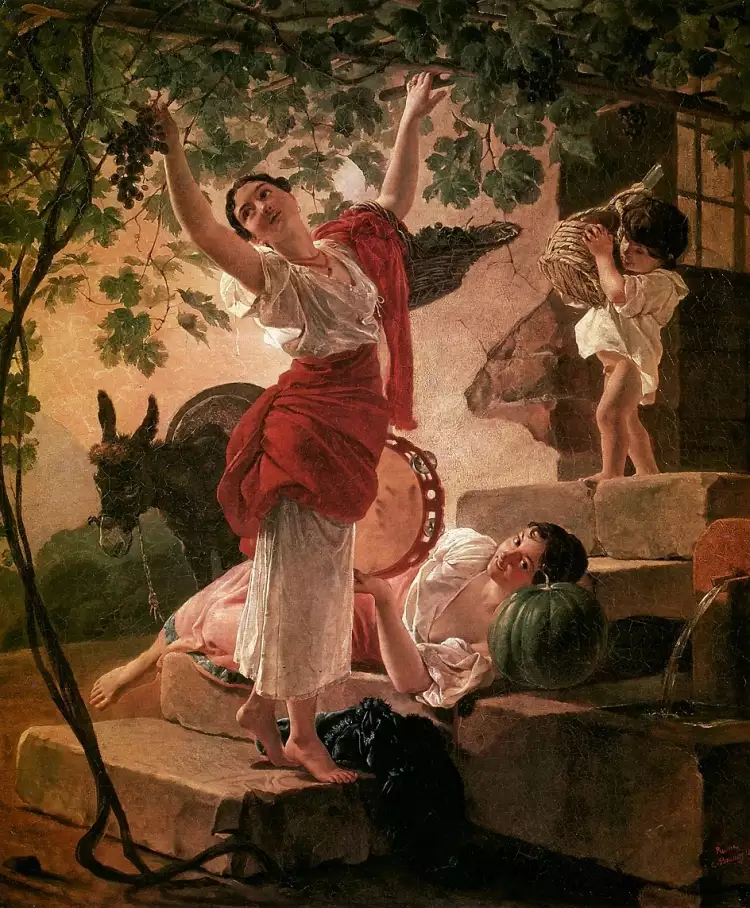 Academism. Karl Bryullov. Girl gathering grapes in the vicinity of Naples, 1827
Academism. Karl Bryullov. Girl gathering grapes in the vicinity of Naples, 1827
And Ferdinand Victor Eugène Delacroix, who initially learned classical mastery, later led the French school of Romanticism, breaking away from the "academic fathers" even more firmly and scandalously, regularly shocking the regulars of the Salon.
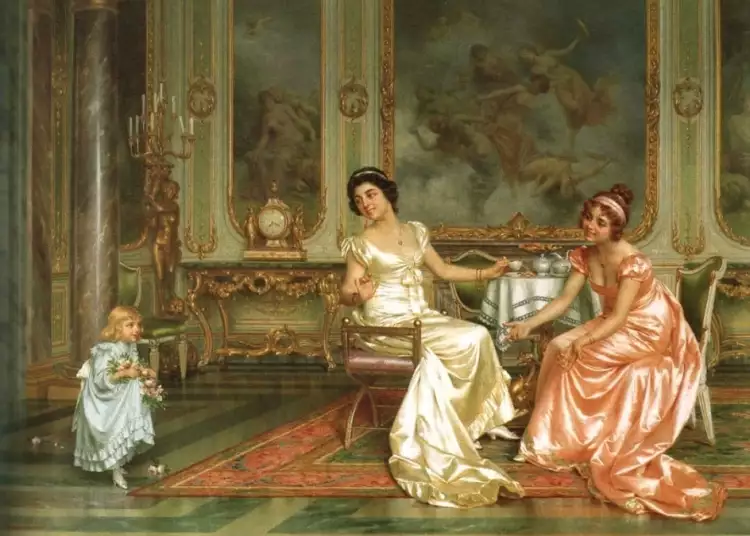 Academism. Vittorio Reggianini. On his birthday
Academism. Vittorio Reggianini. On his birthday
Or take, for instance, the Peredvizhniki (Wanderers) mentioned earlier, who opposed themselves to the conservative academics: after all, they were also raised in this environment.
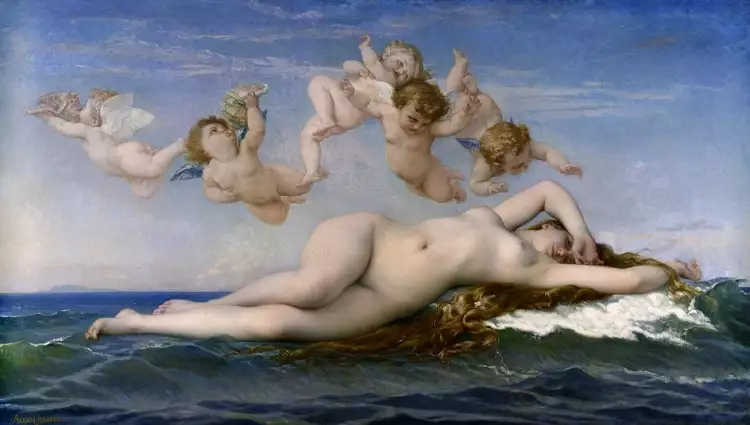 Academism. Alexander Cabanel. The Birth of Venus, 1863
Academism. Alexander Cabanel. The Birth of Venus, 1863
Thus, for some, the academic concept became a cage, while for others, a springboard.
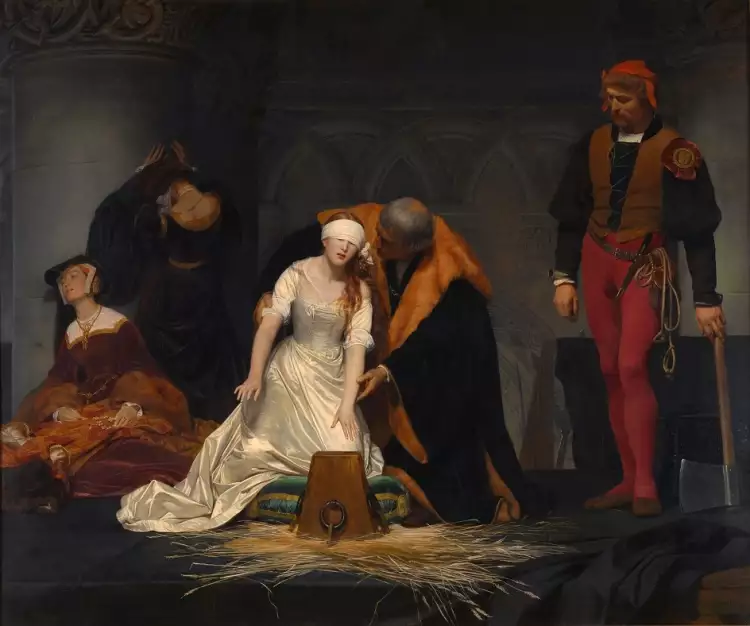 Academism. Paul Delaroche. The Execution of Lady Jane Grey, 1833
Academism. Paul Delaroche. The Execution of Lady Jane Grey, 1833
The importance of the classical-academic tradition should not be underestimated: thanks to it, artistic education was systematized, and new generations of painters studied artistic fundamentals and acquired technical virtuosity.
Academism. Eugène de Blaas. A Pensive Moment
By the way, illustrations for historical books and articles often use works by portraitist academics today.
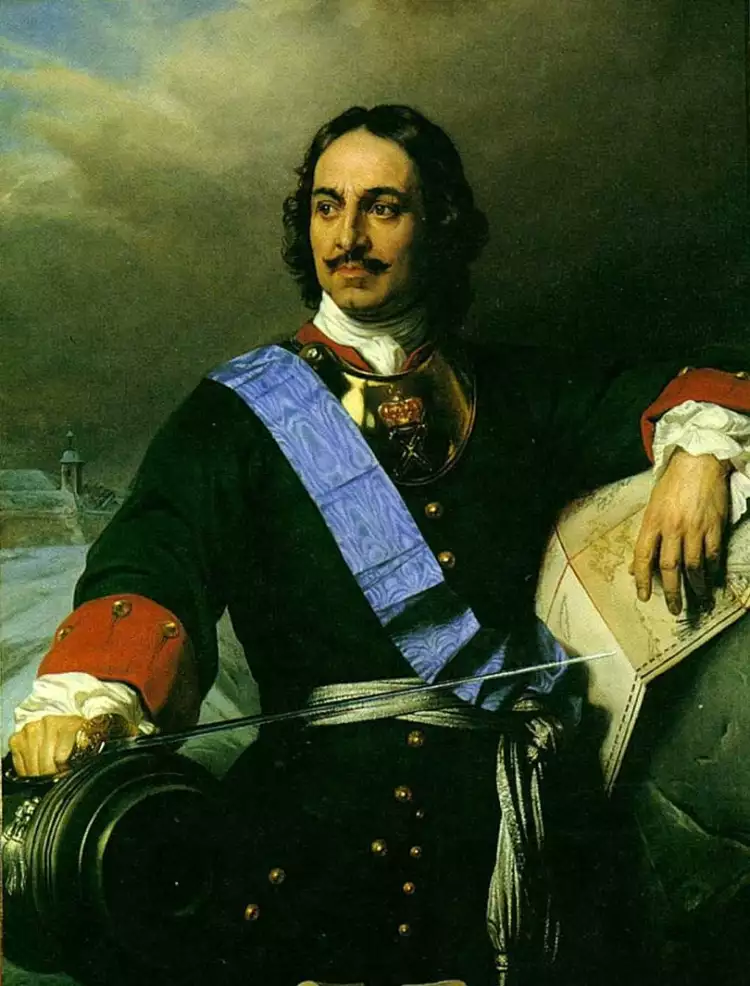 Academism. Paul Delaroche. Peter the Great, 1838
Academism. Paul Delaroche. Peter the Great, 1838
Within this framework, major masters created works that became examples of magnificent painting technique:
- The Carracci brothers, Annibale and Agostino Carracci, founders of the Academia degli Incamminati and the so-called Bolognese academicism.
- Jean Auguste Dominique Ingres, a recognized leader of the academics.
- Lawrence Alma-Tadema, one of the prominent representatives of British painting during the Victorian era.
- Francis Cotes, one of the founders of the Royal Academy in London, working in a Rococo-academic manner;
- Influential Russian academic painters like Fyodor Antonovich Bruni, Alexander Andreyevich Ivanov, Carl Timoleon von Neff (Timofey Andreevich Neff), and Henryk Siemiradzki.
- Paul Delaroche, the author of one of the most famous portraits of Peter I, Alexandre Cabanel, William-Adolphe Bouguereau, and many others.
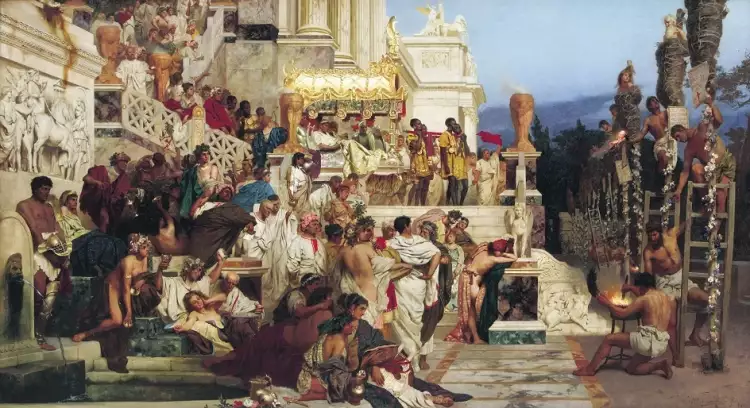 Academism. Henryk Siemiradzki. Nero's Torches, 1876
Academism. Henryk Siemiradzki. Nero's Torches, 1876
Currently, this term is often used to describe works with traditional compositional structure, demonstrating a high level of classical technique (regardless of the plot and idea).
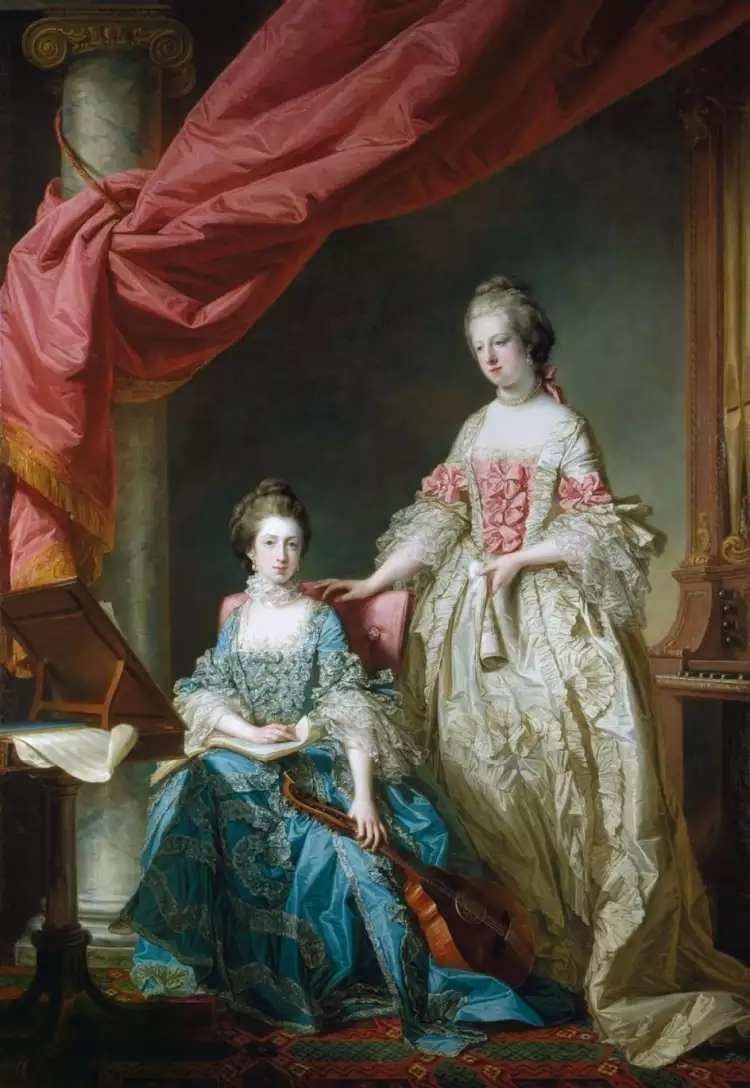
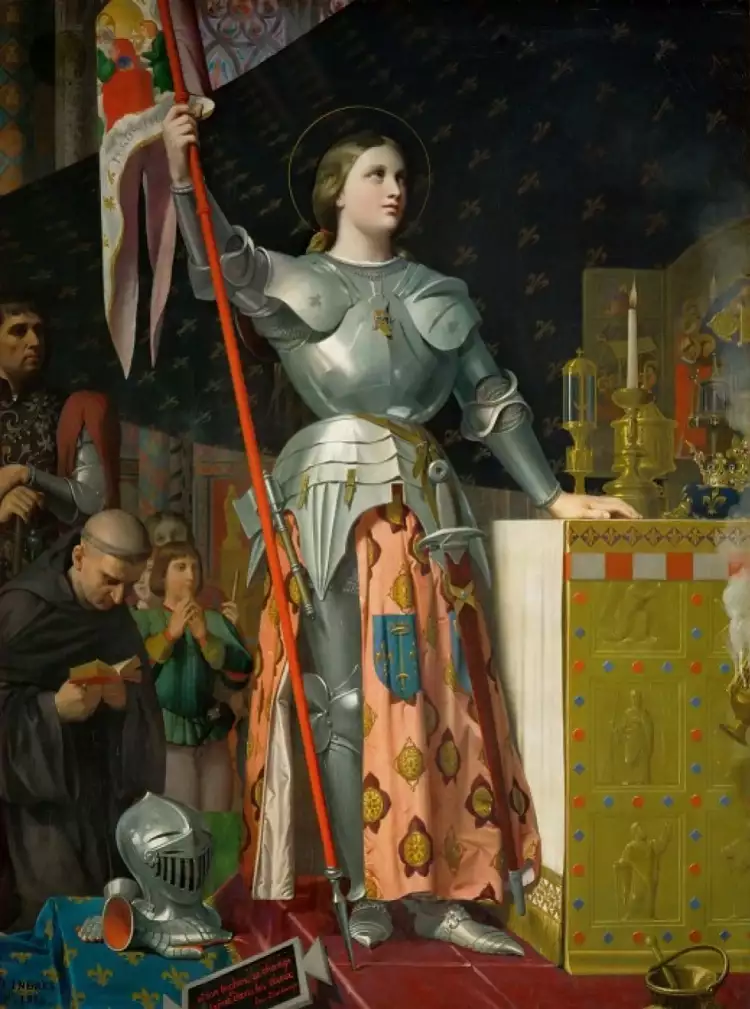
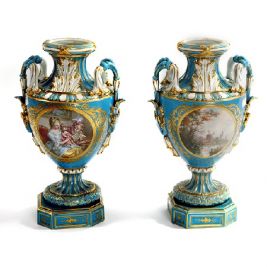 French Porcelain: History of Development and Top Manufactories
French Porcelain: History of Development and Top Manufactories  Empire: Expensive, Luxuriously, Militantly
Empire: Expensive, Luxuriously, Militantly 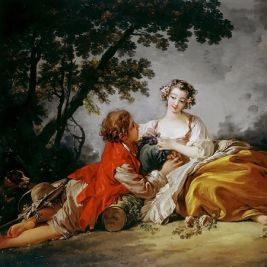 Rococo: Peasant Idylls of Court Painters
Rococo: Peasant Idylls of Court Painters  Sculpture is the unique art of creating three-dimensional artistic works
Sculpture is the unique art of creating three-dimensional artistic works 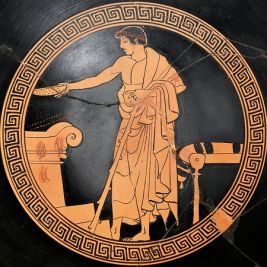 The art of Ancient Greece is an endless source of aesthetic pleasure for descendants
The art of Ancient Greece is an endless source of aesthetic pleasure for descendants 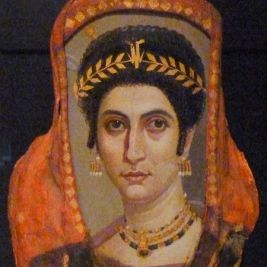 Fayum mummy portraits - ritual painting that preceded its time
Fayum mummy portraits - ritual painting that preceded its time 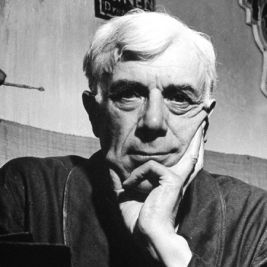 Georges Braque - the founder of Cubism in world art
Georges Braque - the founder of Cubism in world art 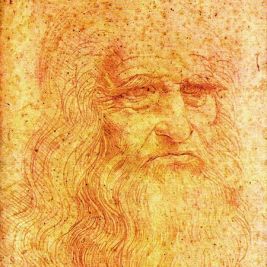 Drawing: essence, types, techniques, and a brief history
Drawing: essence, types, techniques, and a brief history 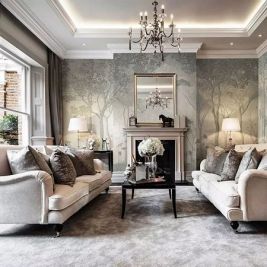 Neoclassical style in interior design is a modern interpretation of the noble traditions of antiquity
Neoclassical style in interior design is a modern interpretation of the noble traditions of antiquity 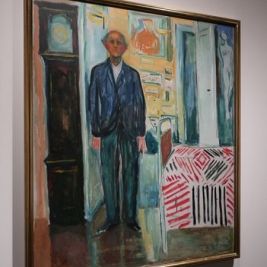 The most famous expressionist artists
The most famous expressionist artists